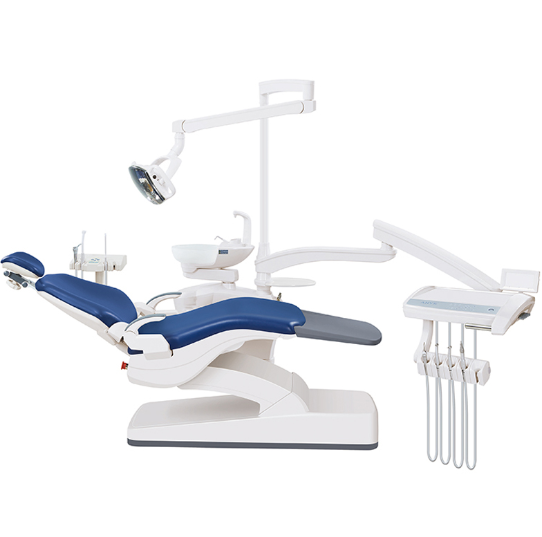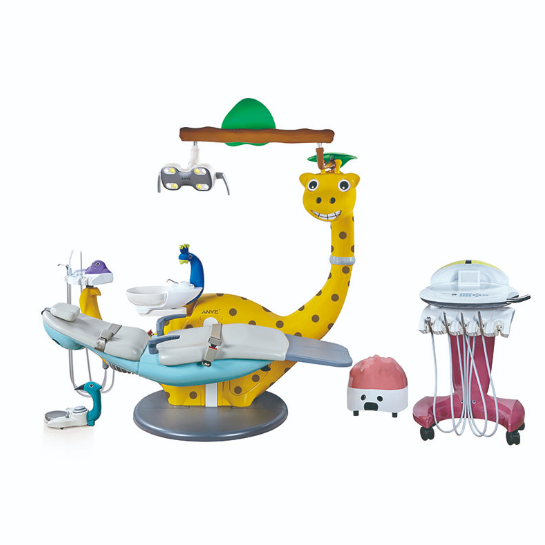How to Buy the Proper Dental Chair Instrument Trays?
The dental chair instrument tray is the heartbeat of a dental clinic, orchestrating the harmony between the dentist's precision and the patient's comfort.
This pivotal tool not only organizes instruments but also streamlines procedures and contributes significantly to the overall experience for both practitioners and patients.
Delving into the nuances of selection can optimize your practice's efficiency and elevate patient care.
This pivotal tool not only organizes instruments but also streamlines procedures and contributes significantly to the overall experience for both practitioners and patients.
Delving into the nuances of selection can optimize your practice's efficiency and elevate patient care.
Ergonomics and Design: The Key to Efficiency
Beyond its functional role, the design of the instrument tray profoundly impacts the ergonomics of the dental setup. An adjustable tray, capable of accommodating varying heights and angles, not only aligns with different procedures but also reduces strain on the dentist, promoting long-term musculoskeletal health.
Consider a tray that harmonizes seamlessly with the dental chair, facilitating an effortless workflow while ensuring the patient's comfort remains paramount.
Consider a tray that harmonizes seamlessly with the dental chair, facilitating an effortless workflow while ensuring the patient's comfort remains paramount.
Material Quality: Durability and Hygiene
Stainless steel reigns supreme in dental instrument tray construction for compelling reasons. Its robustness, resistance to corrosion, and ease of sterilization make it an ideal choice in maintaining a pristine clinical environment.
Look for trays that boast not only stainless steel construction but also incorporate removable silicone mats, further enhancing instrument stability and simplifying the cleaning process.
Look for trays that boast not only stainless steel construction but also incorporate removable silicone mats, further enhancing instrument stability and simplifying the cleaning process.
Size and Configuration: Tailoring to Specific Needs
The mantra of "right size, right fit" holds true when selecting an instrument tray. An overcrowded tray disrupts the flow of procedures, causing unnecessary delays and potential errors.
Conversely, an overly spacious tray can lead to disorganization. Assessing the typical array of instruments used in your practice aids in selecting a tray that strikes the perfect balance, ensuring accessibility without clutter.
Conversely, an overly spacious tray can lead to disorganization. Assessing the typical array of instruments used in your practice aids in selecting a tray that strikes the perfect balance, ensuring accessibility without clutter.
Compatibility and Customization: A Seamless Integration
In a diverse landscape of dental equipment, compatibility is paramount. Seek trays designed with versatility in mind, capable of integrating with various chair models. Some manufacturers offer customization options, allowing you to tailor the tray to your practice's specific needs. Customization might encompass additional holders or adaptors to accommodate specialized instruments or accessories.
Integrated Features: Beyond the Basics
Modern trays often come equipped with integrated features, such as holders for syringes, cups, or mounts for essential accessories like curing lights or intraoral cameras.
Assess the relevance of these add-ons to your practice's daily workflow, embracing those that augment efficiency without cluttering the workspace.
Assess the relevance of these add-ons to your practice's daily workflow, embracing those that augment efficiency without cluttering the workspace.
Ease of Maintenance: Simplifying Sterility
Efficiency extends beyond patient procedures; it encompasses tray maintenance.
Opt for trays designed for easy dismantling, facilitating thorough sterilization and hassle-free reassembly. Smooth surfaces and minimal crevices mitigate the risk of debris accumulation, underscoring the importance of a meticulously clean tray in infection control protocols.
Opt for trays designed for easy dismantling, facilitating thorough sterilization and hassle-free reassembly. Smooth surfaces and minimal crevices mitigate the risk of debris accumulation, underscoring the importance of a meticulously clean tray in infection control protocols.
Budget Considerations: Balancing Quality and Cost
While quality remains non-negotiable, navigating within a budget is pragmatic. Conduct a holistic evaluation, factoring in not only the initial cost but also the long-term benefits.
Investing in a durable, high-quality tray can translate into reduced maintenance expenses and enhanced longevity, proving to be a prudent investment in the long run.
Investing in a durable, high-quality tray can translate into reduced maintenance expenses and enhanced longevity, proving to be a prudent investment in the long run.
Conclusion: Elevating Practice Standards
In the intricate tapestry of a dental clinic, the instrument tray emerges as a linchpin. By amalgamating considerations of ergonomics, material quality, size, integration, maintenance, and budget, the quest for the perfect dental chair instrument tray becomes an exercise in optimizing efficiency, ensuring sterility, and ultimately elevating the standard of care for your patients.



Leave a comment